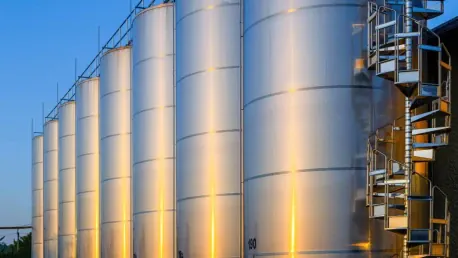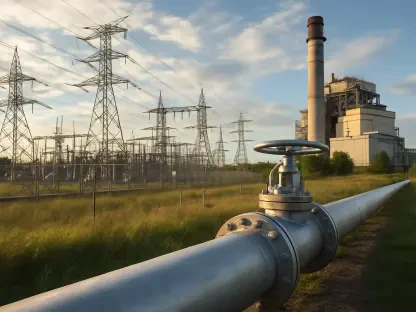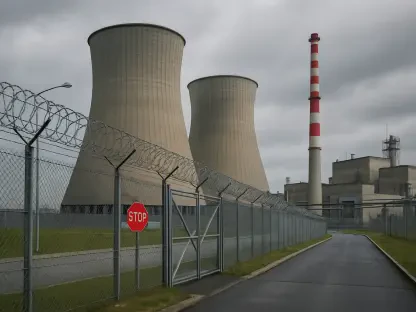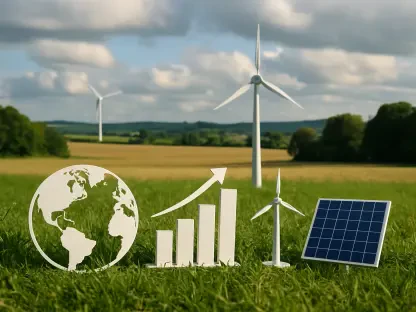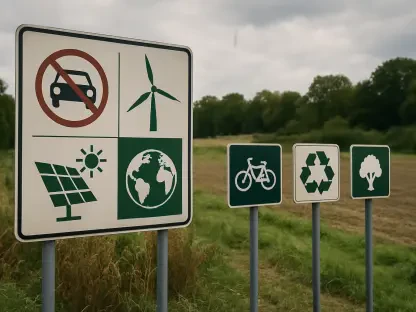With 2024 seeing a remarkable 40% year-over-year growth in biogas project investments, according to the American Biogas Council, the United States is manifesting an increasing commitment to biogas as an alternative energy source. This surge underscores a significant shift in focus toward renewable natural gas (RNG) production, which plays a pivotal role in the expanding biogas landscape. The widespread adoption of biogas technologies across multiple sectors, including landfills, farms, and wastewater treatment plants, highlights the immense potential for these innovations to transform energy consumption patterns and reduce reliance on fossil fuels.
Diverse Applications of Biogas Projects
Growth in Varied Sectors
In 2024, the United States hosts nearly 2,500 biogas facilities, displaying a diverse range of applications across different sectors. Factors contributing to this growth include both technological advancements and favorable policies that encourage biogas production. Wastewater treatment facilities are at the forefront, with 47% of all biogas capture facilities located within these plants. The historical significance of wastewater treatment plants in biogas utilization dates back to the 1800s and continues to thrive due to advancements in technology and processes. Moreover, agricultural operations, landfills, and dedicated food waste processing facilities further exemplify the versatile applications of biogas technology.
Agricultural facilities account for a substantial 25% of biogas capture facilities, leveraging the unique opportunity presented by organic waste generated on farms. These facilities not only provide a solution for waste management but also contribute to sustainable energy generation. Landfills, making up 23% of capture sites, have long been an essential component of the biogas landscape, capturing methane emissions to produce energy. Interestingly, food waste processing facilities, despite representing only 5% of biogas capture locations, are expected to grow significantly in the future. This growth is anticipated as more food waste diversion initiatives and policies take effect.
The Rise of Codigestion
One of the most significant trends in the biogas industry is the rise of codigestion – the simultaneous processing of multiple feedstocks. Codigestion enhances the efficiency and scalability of biogas production, fostering the development of more flexible and sustainable biogas systems. By integrating different types of organic waste, such as agricultural residues, food waste, and wastewater sludge, facilities can achieve higher methane yields and improved overall process stability. This approach aligns with the growing emphasis on circular economy principles, turning waste into valuable resources while reducing environmental impact.
As codigestion gains traction, stakeholders in the biogas industry are exploring innovative methods to optimize feedstock combinations and improve digestion processes. This involves extensive research and collaborative efforts among scientists, engineers, and industry practitioners. Furthermore, the adoption of advanced technologies and monitoring systems enables precise control and monitoring of the codigestion process, ensuring consistent and reliable biogas production. The increased interest in codigestion is driven by its potential to address multiple waste streams simultaneously, offering a holistic solution for waste management and renewable energy generation.
Public Incentives and Favorable Policies
Federal and State Support
Public incentives and favorable policies have played a crucial role in driving the growth of the biogas industry in the United States. The federal Renewable Fuel Standard (RFS) has been instrumental in promoting renewable natural gas (RNG) production by requiring a certain volume of renewable fuels to be blended into the transportation fuel supply. This policy has created a market for RNG and increased its economic viability for producers. Various state-level clean fuel initiatives and sustainability targets have further incentivized the development of biogas projects, making RNG production an attractive option for both investors and developers.
Additionally, the biogas industry benefits from financial incentives such as tax credits, grants, and loan programs that support project development and implementation. These incentives lower the financial barriers associated with biogas projects, encouraging more stakeholders to invest in this renewable energy sector. The National Renewable Energy Laboratory (NREL) has also emphasized the potential of RNG to significantly reduce natural gas consumption in the electric power and transportation sectors. By providing a renewable alternative to conventional natural gas, RNG can contribute to greenhouse gas emissions reduction and enhance energy security.
Emphasis on Renewable Natural Gas
A significant portion of new biogas projects focuses on RNG production rather than traditional power generation. This shift is driven by the economic and environmental benefits associated with RNG, including its ability to blend seamlessly with existing natural gas infrastructure. As a result, biogas projects are increasingly designed to produce RNG for injection into pipelines rather than for direct electricity generation. The market demand for RNG is further bolstered by customer interest in sustainable energy solutions and the desire for cleaner transportation fuels. The favorable economic conditions and supportive policies have made RNG projects more financially attractive, encouraging increased investments in this area.
The American Biogas Council’s advocacy efforts play a crucial role in promoting policies that support RNG production and the broader biogas industry. By working with federal, state, and local stakeholders, the Council aims to create a conducive environment for biogas development and address regulatory barriers. Policies that level the playing field for RNG with conventional fuels, such as equitable “tailpipe rules” for medium- and heavy-duty fleets and the extension of relevant tax credits, are essential for sustaining the momentum in biogas investment. Continued public and private support will be vital for realizing the full potential of RNG and integrating it into the nation’s energy landscape.
Future Prospects and Challenges
Potential for Expansion
The American Biogas Council’s ambitious projection that over 15,000 new biogas sites could be developed in the U.S. underscores the significant growth potential for the industry. Drawing inspiration from Germany’s successful model with over 10,000 digesters, the Council emphasizes the importance of creating an enabling environment for biogas development. The integration of advanced technologies, alongside continued policy support, is expected to drive the expansion of biogas projects across the country. Increased collaboration among industry stakeholders, policymakers, and researchers will be crucial for overcoming existing challenges and identifying new opportunities for growth.
The agricultural sector presents a particularly promising area for biogas expansion, given the large volumes of organic waste generated by livestock operations and crop production. The adoption of anaerobic digestion technologies on farms can provide dual benefits of waste management and renewable energy production. However, regulatory and financial challenges must be addressed to encourage wider adoption of biogas technologies in the agricultural sector. The development of scalable and cost-effective solutions, along with streamlined permitting processes, can facilitate the establishment of new biogas facilities in rural areas.
Addressing Industry Segments
In 2024, the United States is experiencing an extraordinary 40% year-over-year increase in biogas project investments, as reported by the American Biogas Council. This impressive growth reflects a burgeoning commitment to biogas as a viable alternative energy source. The spike in investment signifies a meaningful shift toward renewable natural gas (RNG) production, a key factor in the evolving biogas sector. Biogas technologies are increasingly being adopted across various sectors, including landfills, farms, and wastewater treatment plants. This widespread implementation showcases the vast potential of biogas innovations to transform our energy consumption patterns and reduce fossil fuel dependency. With more sectors recognizing the benefits of biogas, the United States is not just embracing a new energy paradigm but also working toward a more sustainable future. As technology advances and investments rise, the country’s energy landscape is poised for a significant transformation, driven by renewable energy sources like biogas.
